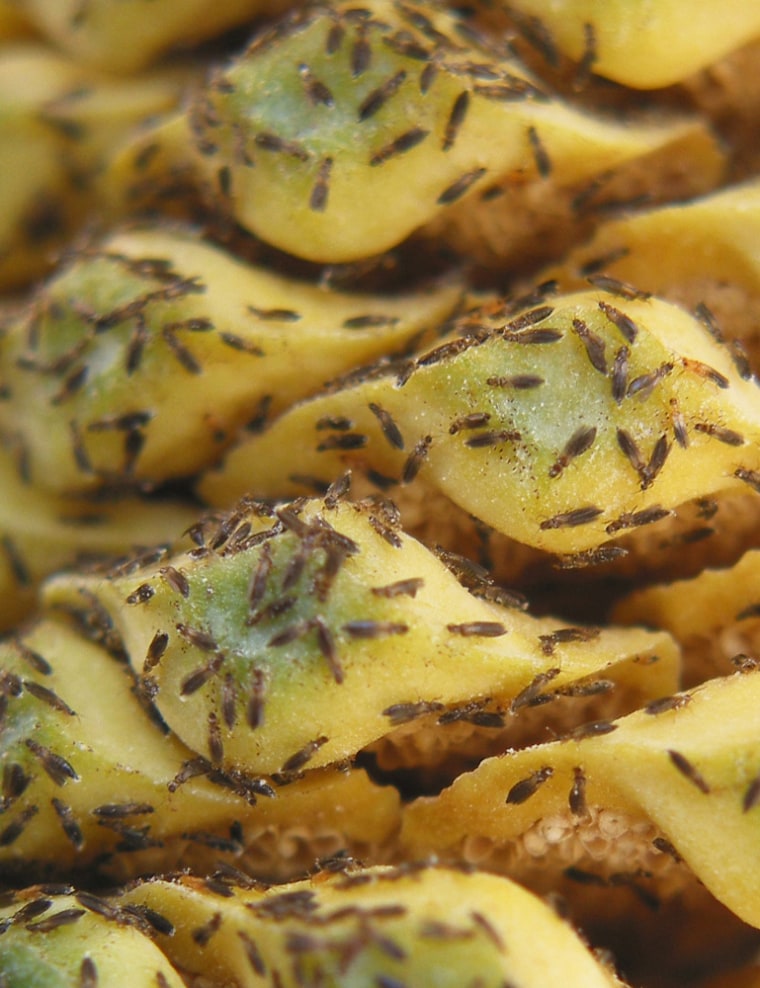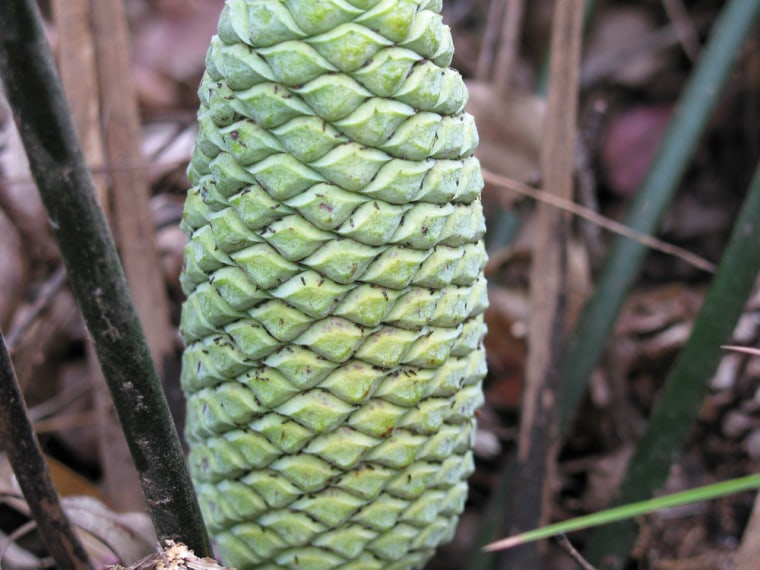Think about strong perfume and a threesome, and what do you get?
No, try again.
The correct answer is — reproduction by an ancient type of plants called cycads.
Sure, lots of plants use a third party in reproduction to carry their pollen: Think the birds and the bees.
But cycads have put their own special spin on the process, scientists report in Friday's issue of the journal Science.
Male cycads produce cones that open and emit a fragrance that attracts insects called thrips, which enter the cones and become covered with pollen, according to the research team led by Irene Terry of the University of Utah.
Then the male cycads heat up — raising the temperature as much as 25 degrees Fahrenheit — and produce a much stronger odor, driving the thrips out.
The thrips, looking for more cycads, notice the attractive scent of female cycads and enter their cones, bringing the male pollen to the female plants.
The scientists call this "push-pull pollination.''
"People think of plants as just sitting there and looking pretty and sending out some odors to attract pollinators, but these cycads have a specific sexual behavior tuned to repel, attract and deceive the thrips that pollinate them,'' Terry said in a statement.

"These cycads heat up, and associated with that heating is a huge increase in volatile fragrances emitted by the cone,'' Terry said. "It takes your breath away. It's a harsh, overwhelming odor like nothing you ever smelled before.''
Cycads have been around at least 250 million years. They aregymnosperms, a group that also includes firs and pines. The ones studied by Terry and colleagues were in Australia.
The male cycads increase their temperature between 11 a.m. and 3 p.m. daily during their annual coning season lasting a few weeks. They generate heat using sugars, starch and fats that normally power everyday cell functions.
Robert Roemer, Terry's husband and a professor of mechanical engineering at the University of Utah, studied heat transfer within the cycad cones.
The research was funded by the National Geographic Society, the University of Utah and the University of Queensland, Australia.
